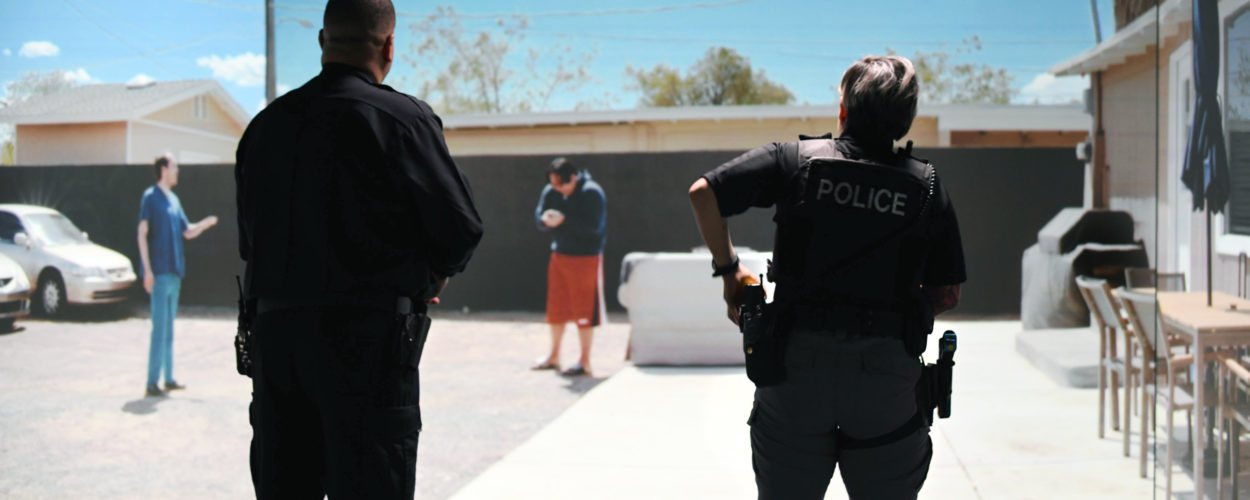
When looking for the most effective ways to train your cadre, you must find a method that will ensure skills are properly transferred to the field. Officers should be immersed in the training both physically and psychologically in order for skills to be able to transfer effectively. If one or both of these are not possible, there may be a big difference between officers’ performance in the classroom and on the street.
It is no secret that simulation training has become a new and effective way for officers to learn skills and retain information. Unfortunately, picking a simulator isn’t as simple as you might think – you have to do the proper research to ensure you’re getting everything out of it that you need. As with most technology, the cheaper solution is likely not the best. No agency would purchase the cheapest firearms, so why purchase the cheapest training technology, especially when trying to ensure officers utilize their training and firearms in the most appropriate situations?
There are two ways that a simulator should immerse trainees: through physical fidelity and psychological fidelity. These are two different concepts but together they can create an ideal training environment.
Physical Fidelity
Physical fidelity measures the similarity between conditions within the simulator and conditions in reality. Some considerations include the weapon used within the simulation, the accuracy of the ballistics and the way on-screen characters react to the trainee’s actions and words.
Psychological Fidelity
Psychological fidelity relates more to the mental side of training. Not only does the simulation have to be physically realistic, but trainees must experience the same mental processes as they would in the field. Officers must feel stress, empathy and other relevant emotions to prepare them for real life encounters.
How VirTra Achieves Both
VirTra achieves both physical and psychological fidelity through the following methods and more:
• Filming real human actors with professional equipment rather than using CGI
• Manufacturing recoil kits and magazines that fit into the trainee’s duty weapon
• The patented Threat-Fire® that provides electric feedback for consequences such as gunshots, dog bites, explosions, etc.
Imagine for a second that you had one but not the other. You may have great psychological fidelity by allowing officers to experience stress in a simulator, but what if you gave them clearly fake weapons that do not provide the same recoil as their duty weapon? They would simply not be prepared when equipped with their real firearm.
What if the opposite is true and you are using your duty weapon with highly accurate ballistics and recoil, but what is shown on screen are CGI characters that look robotic? It would be difficult to empathize with on-screen subjects who are clearly not real people.
A true simulation training experience needs to have both physical and psychological fidelity. Missing one or both may cost you in the end – as you must “train how you fight.”
Contact a VirTra specialist to learn more about properly training the mind and body.
Recently Published
Join Our Newsletter







